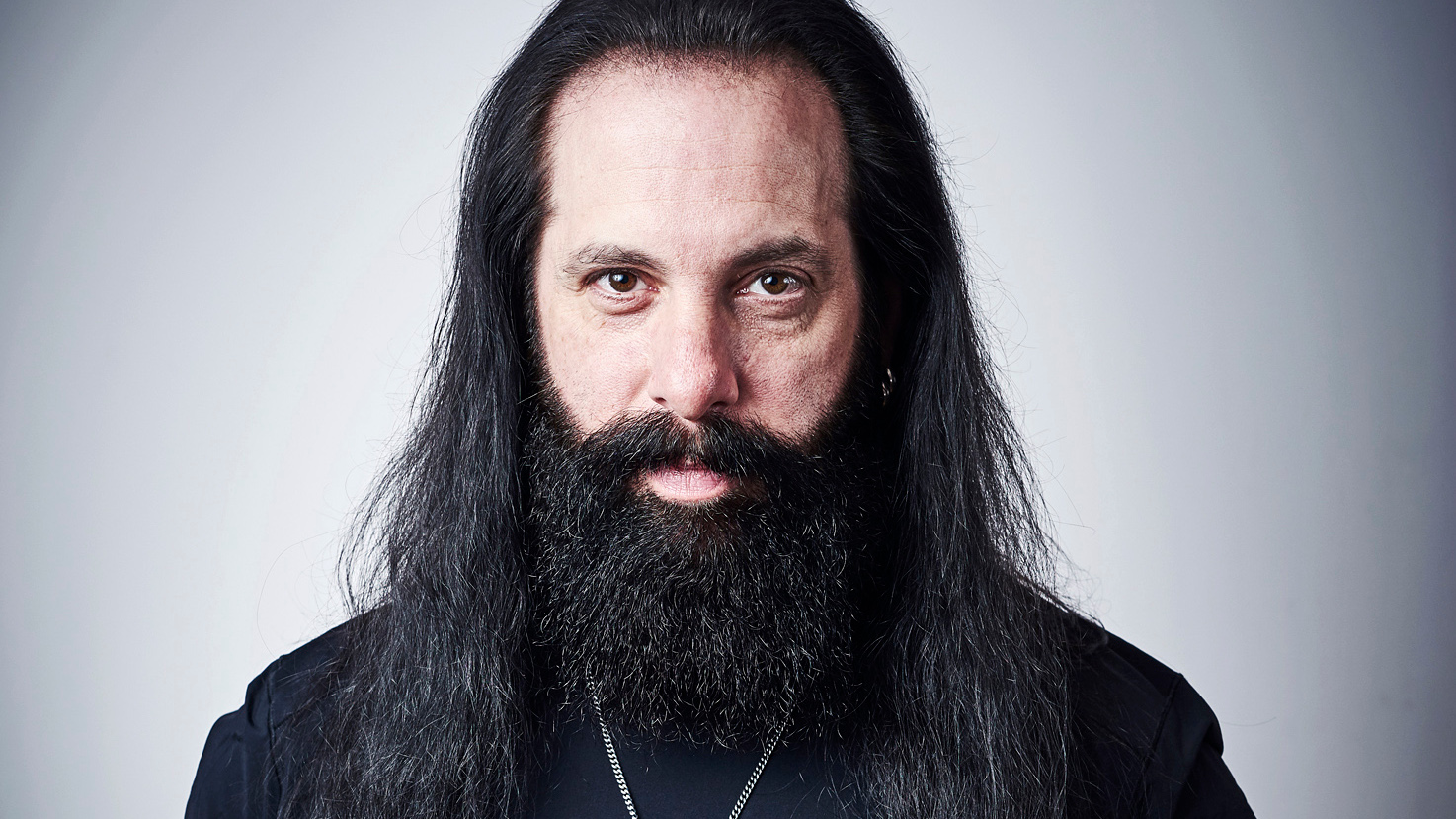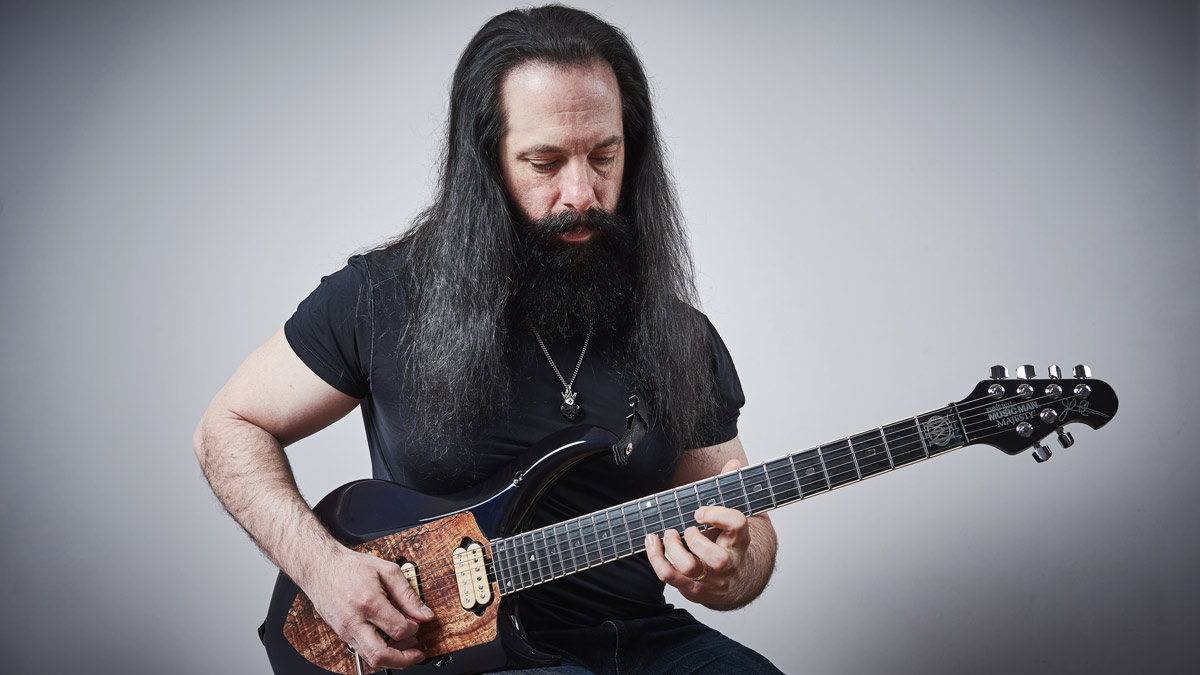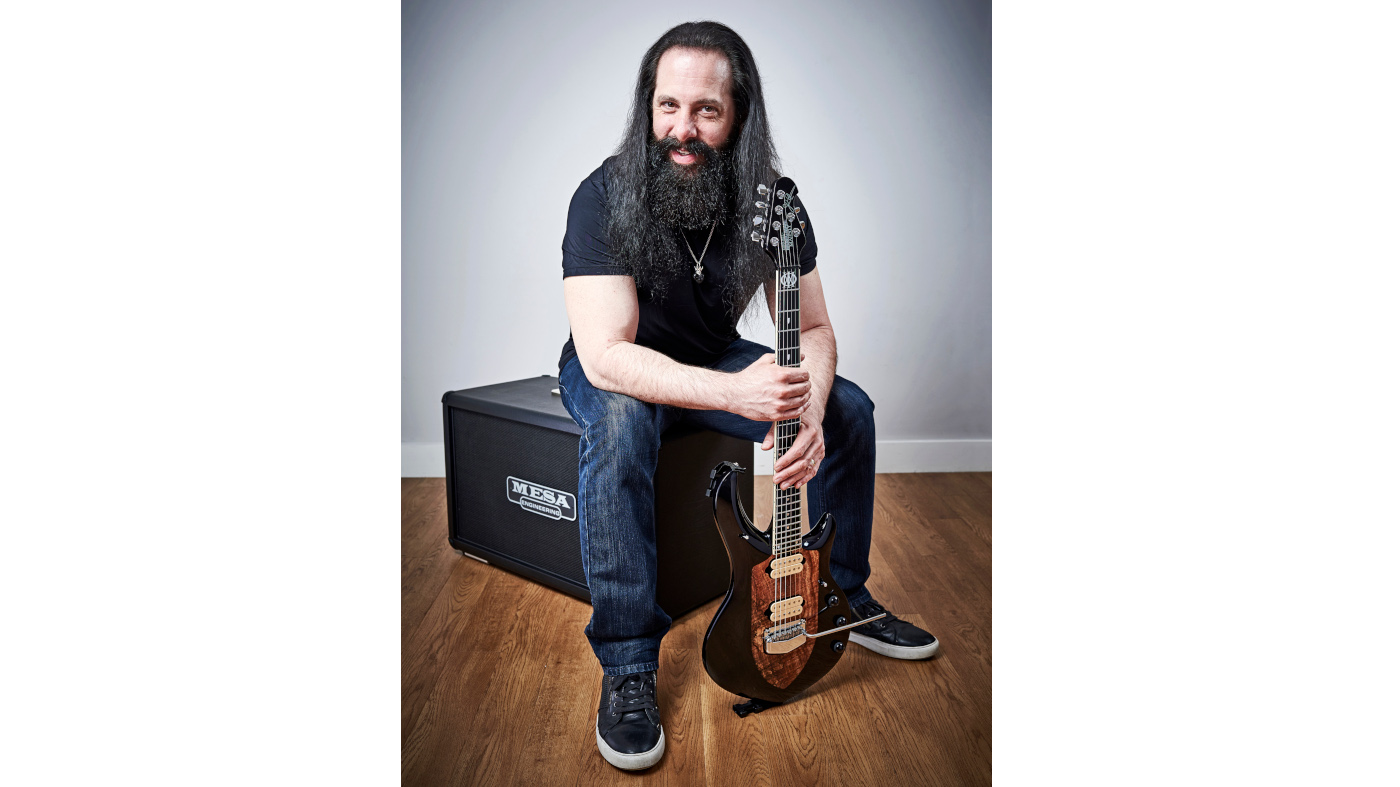John Petrucci: “The last thing you want to do is be complacent or just have ‘okay’ guitar parts and uninspired solos”
The DT man talks Distance Over Time, six-string evolution and guitar-player camaraderie

John Petrucci wears his electric guitar legend status lightly. Officially, we have been granted just 20 minutes for today’s interview - a fair indication of the Dream Theater guitarist and Guitarist of the Year judge’s sky-high profile and the number of journalists lined up for their pound of flesh.
But as it turns out, the 51-year-old is warm, relaxed and in no particular rush, happy to hold forth on his guitar technique, gear and songwriting with the same easy fluency that we’ve come to expect from his impeccable fretwork.
The ‘proggy’ thing is just an innate part of the way we write music together
Even so, for the interviewer, it’s worth pinching yourself and acknowledging that you are in the company of a monster talent in prog guitar.
It’s three decades since a gang of Berklee Music College students formed Dream Theater and released their debut album, 1989’s When Dream And Day Unite, which announced a new world order for prog.
Already, the New York-born Petrucci’s power-picked chops, liquid solos and melodic instincts were eye-popping, but the revelation has been watching them evolve over a 14-album catalogue, capped by this year’s Distance Over Time.
You’ve said you wanted this new album to be “heavy” and “proggy”...
“Well, it was a very natural thing. So that there were no distractions, we’d gone away to this big barn in Upstate New York that’s been renovated into a beautiful film and recording studio. We had all our live gear set up and we did all the writing in this big 30ft-high room.
Get the MusicRadar Newsletter
Want all the hottest music and gear news, reviews, deals, features and more, direct to your inbox? Sign up here.
“So we had a ton of guitars and amps, just cranked it up until it was really loud and live in the room. That just inspires a heavier, groovier thing, because you’re all jamming together, the testosterone comes out, you gravitate towards the heavier stuff. And then the ‘proggy’ thing is just an innate part of the way we write music together. The odd time signatures, the wacky curveballs, the solos... all those elements just come out naturally in our style.”
How did you approach the guitars?

“In my opinion, the sound and style of the guitar dictates the style of the song. So I had a whole bunch of different guitar tunings readily available, kinda like an artist’s palette, and I was able to grab baritones, seven-strings, drop-seven-strings. That tends to point the stuff into a heavier direction; it’s gonna sound more metal. And then, if you’re playing with more of a Steve Howe kind of sound, it’s gonna go more in that classic prog direction.
“So knowing how to dial in that sound and determining what the sonic landscape will be: that’s really important to me as a guitar player and a producer.
“The other thing is the arrangements. Y’know, how to come up with guitar parts that are energetic and move the song along, but will also work as an ensemble part. And then the parts where I’m able to let loose and do those extended solos. So some of it is restraint - and then knowing when to let it all hang out.”

Your Majesty
What was your core setup on this album?
“My signature Mesa/Boogie JP-2C - that one head is on the whole record. The cleans, the leads and the rhythms, it’s just the ultimate sound. Like I said, I brought in my touring rig, so I just fired that up. Early in [2018], I’d used it for G3, so as soon as I plug in and play, it sounds incredible. And then I’ll just plug into the head and mic and it sounds amazing.
The guitar plugs straight into the head and it’s this unbelievably pure sound
“For guitars, it was mainly my Ernie Ball Music Man Majesty. It’s been 18 years now working with them, and we’ve honed these guitars in, between the artistry of the construction, the tonal wood combinations and then working closely with DiMarzio on the pickups. Literally, the guitar plugs straight into the head and it’s this unbelievably pure sound that can go from a beautiful clean to a heavy-as-hell rhythm or a singing, liquid-y lead.
“You want to hear what that amp and guitar sounds like: listen to this record. The only time I strayed from the Majesty was with my BFR signature, this Bb baritone. I used it on the second track, Paralyzed, and on Out Of Reach, which is the only ballad. On the breakdown section of Fall Into The Light, I layered a Taylor acoustic with a custom Gypsy-jazz guitar to play the melodies - then there’s this floating lead guitar on top, which is the Majesty.”
There’s a new Majesty - are you pleased with the model’s evolution?
“I really am. When we first came out with that, it was the first neck-through version of my signature model. The design is just so unique and groundbreaking. At first, people didn’t know what to think about it. Then it turned into something that so many people around the world connected to and loved. Especially myself.
“From the beginning, the design blew me away. But we’ve developed the wood combinations, tweaked the pickups, and we always do something aesthetically. Y’know, we had the Monarchy series, the Precious Metal series, the Artisan series, and they’ve all taken the look of the guitar in a different place. The [2019] Majesty that we debuted at NAMM is the most aesthetically beautiful version I’ve ever seen. You can’t stop looking at it.”
How did you track your guitars on Distance Over Time?
“All of the guitars were recorded in the control room with the amp cranking in the main live room and mic’d up. That’s where I was the whole time. But for the solo in Out Of Reach - when we were writing that song and I was standing next to my amp, I was getting this incredible resonance between my baritone and the amp.
“On the demo, I had this really sweet tone, almost like there was a sustainer on the guitar. I really wanted to recapture that when I tracked. So that was the one solo where I went down to the floor, tracked that in front of the amp - and you can hear the way the notes are resonating and how they blossom into this beautiful feedback.”
Pedal drawer
What did you use in terms of effects?
“In my touring rig, there’s a pedal drawer, where I’m able to switch pedals in and out, going into the front of the amp. There’s various TC Electronic pedals, like my Dreamscape and the [Viscous Vibe] Uni-Vibe phaser, things like that. So if I had an idea, I’d pull a pedal out, plug in and track it that way. I used my Dunlop signature wah for the solo on Viper King.
“One thing we used a lot that was really fun is, TC came out with a new plug-in for the 2290 [delay processor] that comes with a desktop controller. The 2290 was in all of my rigs from the very beginning. I fell in love with that unit, and I’m very used to what that sounds like, that very big chorus sound. So we used that plug-in on the solo in Paralyzed - and it really sounds just exactly like the original 2290.”
How is your trademark power-picking technique evolving?
You can go on YouTube now and see young kids with massive technique. There’s no limit to where you can take it
“Well, this album is a further extension of my style. There’s a couple of things. One is to use that sort of strength when coming up with rhythm parts that are really tight and syncopated and locked in with the drums. You can hear that on Pale Blue Dot.
“And then, the other thing is to get a very clear and defined sound when you’re playing really fast. I try to mix techniques up when I’m playing solos, so you’ll hear some legato, some hybrid stuff, some sweep stuff - but then, when there’s a really fast, linear type of run, that’s when that kind of picking comes into play. That’s when you can really hear the definition on every note. It sorta pops out. You’ll hear that on the long scalar-type runs. That’s where it’s really effective.”
How do you think the guitar can continue to ‘progress’?
“Well, I’m not sure where the next giant leap will come from, but I know the guitar can progress, because in the grand scheme of music, it’s still very young, as far as rock ’n’ roll, metal and prog.
“You can go on YouTube now and see young kids with massive technique. There’s literally eight and nine year olds who can play amazingly. There’s no limit to where you can take it. There are so many bands in the prog genre with different takes on it - some more traditional, some more metal, some more electronic, some more psychedelic. There’s all different ways to spit that out.”
Do you ever think about how age will affect your technique?
“I do think about it. But I see a lot of players my age or older and it doesn’t seem like it’s something that’s an issue. Unless you have a real physical problem, whether it’s arthritis or something like that. It’s kinda cool seeing players that are still going and they play better than ever.
“Music is great, because you can do that pretty much until you drop. Which a lot of people do [laughs]. And like I say, unless you’re afflicted by a specific ailment due to age, you’re not gonna have a problem.
“When I look back and think about how I played when I was 16, and moving on to my 20s, 30s, 40s and now 50s - to me, it seems like you gain more experience, you gain more technique, you get better. And it’s fun, especially with guitar. You see guys up there smiling and shredding away like it’s nothing. So I’m not worried about it.”

Simply the best
Do you ever wake up and think: ‘I’m arguably the best guitarist in the world’?
“I never wake up thinking that [laughs]. I wake up and I say, ‘Oh my God, I have to practise.’ It’s funny; most guys I talk to, that’s a common thing - we’re all our own worst critics. Everybody wants to get better, everybody wants to practise more. And that’s great. That’s one of the wonderful things about music - and especially guitar.”
Does it put pressure on you that we expect guitar pyrotechnics from your albums?
I like that guitar-player camaraderie, inspiring and pushing each other
“Y’know, it’s funny. At the beginning of 2018, I’d done 80 shows with G3 - playing with Joe Satriani, Phil Collen and Uli Roth every night. And then I did my guitar camp [John Petrucci’s Guitar Universe, a four-day shred intensive] right before I did my solos for this album. So Al Di Meola was there, Guthrie Govan, Tosin Abasi, Jason Richardson, Andy James, Rusty Cooley, Jon Finn - all these amazing players. We’re hanging out, and you just can’t help but get inspired.
“It gives me this sense that I really want to up my game, make sure I’m always trying to do things that are new, that are challenging to me. It’s like, the last thing you want to do is be complacent or just have ‘okay’ guitar parts and uninspired solos. That’s just not me. So I like that guitar-player camaraderie, inspiring and pushing each other.”
Joe Satriani once said he was envious of how effortless your playing seems. Whose technique are you jealous of?
“Well, Joe’s! I watch him every night and I’m constantly blown away by his creativity, his playfulness, his technique, his emotion that he puts into the guitar. There’s so many guys that are just out of control - all those guys I mentioned at my camp. Every single one of them. I’m just blown away. But it’s inspiring; it only makes you just want to take the guitar further, practise more.
“You know, ‘jealous’ is a funny word, but I know what Joe means by that. If anything, the part that I feel jealous of is the seeming ease that they do what they do. When you’re watching somebody like Al Di Meola or Guthrie, and you’re watching this ridiculous technique go by, it seems like, to them, it’s just second nature, like talking. To have control of that kind of vocabulary - to have it come out so easy - definitely inspires me.”
“Every note counts and fits perfectly”: Kirk Hammett names his best Metallica solo – and no, it’s not One or Master Of Puppets
“I can write anything... Just tell me what you want. You want death metal in C? Okay, here it is. A little country and western? Reggae, blues, whatever”: Yngwie Malmsteen on classical epiphanies, modern art and why he embraces the cliff edge











